Carnial Sacral Therapy
Cranial Sacral Therapy (CST), is a subtle but effective bodywork that has gained popularity in recent times.
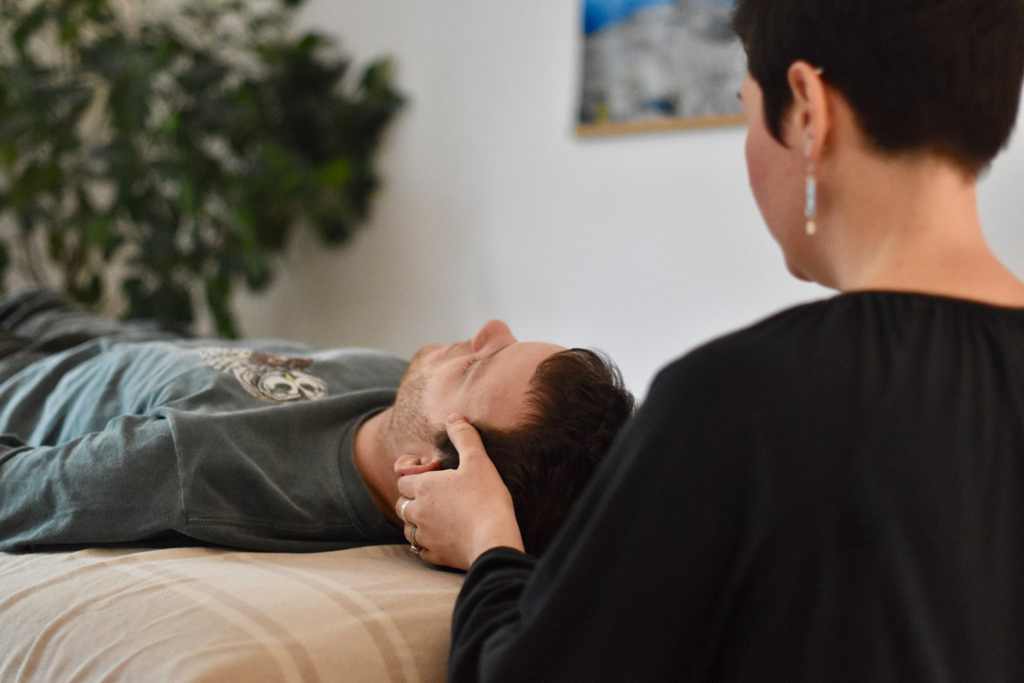
Craniosacral therapy is a light therapeutic method taken up within the center of the body to relieve tension, which in turn enhances the body’s natural healing techniques, as it incorporates the head and tail bones and the vertebral column. Anyone wishing to understand how to get started with this system of CST, has to be equipped with how such training needs to progress through certification and then progressively, building the right competency. This guide will help you to get acquainted with normal queries.
What is Cranial Sacral Therapy?
This therapy is done on the bones of the head, spinal column, and sacrum with gentle touches of the head to relieve tension and start to heal.
Cranial Sacral Therapy is the manipulation of cranial, sacral, and spinal bones that is intended to restore the functioning of the Central Nervous System. As said, this method is non-invasive and helps in relieving tension in a gentle supportive way, and enhances the natural healing action of the body.
There is sufficient evidence to support the contention that treatment involving the craniosacral system may ameliorate conditions as far ranging from migraines and chronic pain to anxiety and associated disorders. Since the therapy is quite mild and non-invasive, it therefore is good for all age groups, from infants to old people.
How do I start learning Cranial Sacral Therapy?
To start learning this modality in Cranial Sacral Therapy, first find a reputable, certified CST training program, as many of the courses give an overview of anatomy and physiology with emphasis on the craniosacral system.
To begin learning the modality of Cranial Sacral Therapy, first find a reputable, certified CST training program, as many of these include foundational knowledge in anatomy and physiology with emphasis on the craniosacral system.
Training will also provide hands-on experience whereby you can develop the required skills. Some courses offer introductory workshops of limited duration, while others engage in thorough training ending with certification.
You need to select a type of appropriate training program that can suit your needs and style of learning, at same time meeting the goals of your career. Be prepared for continuous education; advancement in CST often involves learning and more practice over time.

Do I need a license to practice Cranial Sacral Therapy?
In most areas, no license is needed to practice CST, but some states require certification, especially when combined with massage or physiotherapy.
While a license that specifically targets Cranial Sacral Therapy may not be issued in all regions, researching the regulations regarding alternative therapies in your area is in order. The certification by a recognized institution may be compulsory, depending on your state or country, especially in cases where one practices CST along with other therapies like massage or physiotherapy.
Certification will definitely help in gaining better credibility among clients and employers. Additionally, it would be operative to check for professional organizations in your locality that offer further guidance, support, and continued education for Cranial Sacral Therapy practitioners.
How long does certification take in Cranial Sacral Therapy?
The time it takes for certification in Cranial Sacral Therapy may range from some months up to a year, depending on the program and the level of training provided.
It depends on the kind of program and level of training involved when one wants to be certified in Cranial Sacral Therapy. Some take a few months for introductory programs, while the more complete certifications, including in-depth anatomy study and hands-on practice, take upwards of a year or more.
For already licensed massage therapists or healthcare providers, the process may be quicker. Advanced training and workshops continue the professional development necessary for new skills and techniques after initial certification.
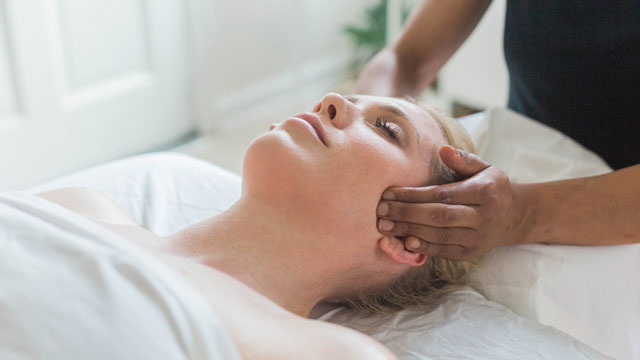
How much do Cranial Sacral Therapy training courses cost?
For someone seeking training in Cranial Sacral Therapy, the price incurred will amount from $500 to 5000 dollars depending on how long the course is and what level of certification one is attaining.
The cost of Cranial Sacral Therapy training can vary widely, depending on the length and depth of the program. For example, a short introductory workshop might cost as low as $500 while a full certification program comprising anatomy, hands-on practice, and other advanced techniques may be above $5000.
Other expenses may include purchased reference books, supplementary materials, licensing fees, and expenses associated with the final exam. Some institutions will also have payment schemes or assemblies to swallow the economics of the program.
How do you integrate Cranial Sacral Therapy with other therapies?
Cranial Sacral Therapy can be used integratively with other advanced therapies but as it is, it can solely help with holistic healing when combined with such therapies as massage therapeutic care, chiropractic treatment, and acupuncture.
Due to its delicate nature, cranial sacral therapy is a modality that can complement other healing modalities, including massage therapy, chiropractic therapy, acupuncture, and physiotherapy.
This method relieves relatively quickly because of the integrative approach addressing different components of the organism. For example, massage can be performed first to ease muscle stiffness and facilitate CST itself, with as follows chiropractic adjustments for spinal status improvement.
What are the benefits of doing Cranial Sacral Therapy?
It relieves tension on the physical and emotional level, which affects the body, reducing stress and pain while improving one’s general sense of well-being.
Cranial Sacral Therapy has numerous advantages for practitioners and their clients alike. In the case of the clients, CST reduces stress, relieves chronic pain, reduces migraine attacks, and can be used to relax the person. This also enables emotional well-being, allowing the body to release stored tension.
For practitioners, CST offers a satisfying career path in which they are able to work with the client in a holistic manner, remedying both physical and emotional problems. The passive and gentle nature of this form of therapy thus renders it appropriate for a wide category of patients, including newborn babies, the elderly, as well as those suffering from chronic conditions; hence, making this a diversified and gratifying practice.
Conclusion:
As you get started in Cranial Sacral Therapy, you may find opportunities to bring holistic healing to people in all age groups. You might start your very own successful practice by graduating from an accredited program, learning all of your essential skills, and supplementing CST with other therapies when you’d like. Demand for gentle, non-invasive therapies is beginning to be on the rise. Practicing in Cranial Sacral Therapy is a valid career option in the field of holistic health that might help clients achieve balance and well-being.
Carnial Sacral Therapy
Cranial Sacral Therapy (CST), is a subtle but effective bodywork that has gained popularity in recent times.
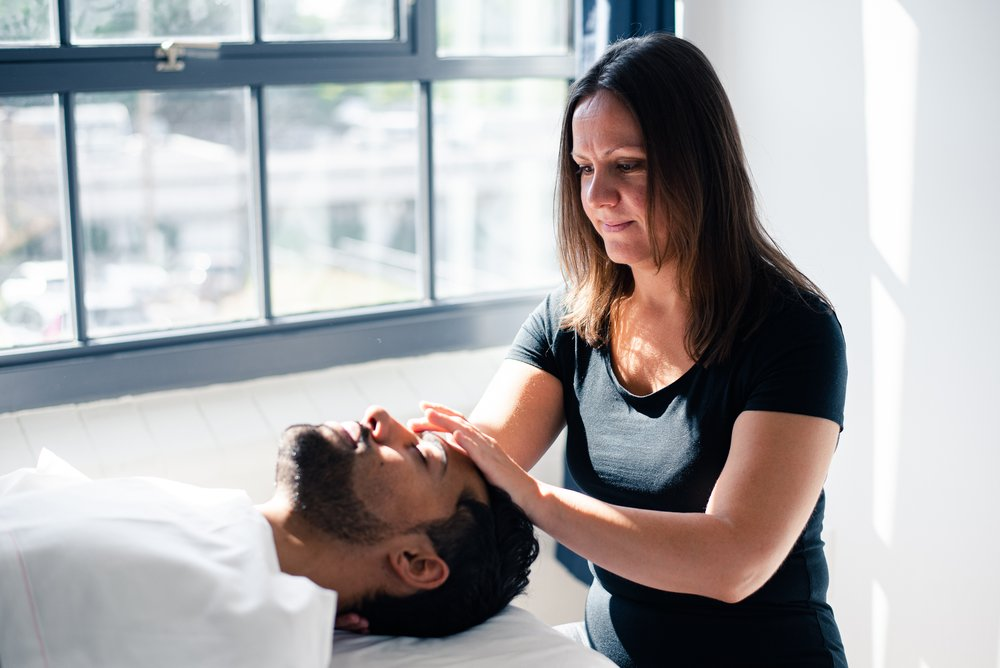
Craniosacral Therapy is an alternative therapy concerned with the mild manipulation of cranial bones and spinal columns of the body. This helps in enhancing functionality related to the central nervous system. If you are one of those who believe in holistic healing and want to empower yourself as a practitioner in Cranial Sacral Therapy, then here comes an understanding of major steps toward the same. This guide will walk you through the steps to getting certified, licensed, and ready for practice.
What are the requirements to be a professional in Cranial Sacral Therapy?
It requires one usually to be certified by an accredited institution to practice. Massage therapy, physiotherapy, or a holistic health background usually helps, though this is not a necessity.
Classes shall involve aspects such as anatomy, cranial sacral methods, and hands-on training. Prior massage therapy, physical therapy, or any other background in holistic health is helpful but not usually required.
In some regions, licensing may also be involved in certification, especially if you would like to have a private practice. Continuing education is advisable; new techniques will be constantly updating you and making you knowledgeable; often this will bring more credibility.

How long does it take to become a Cranial Sacral Therapy practitioner?
The time it takes to be a practitioner in the field of Cranial Sacral Therapy may be around a couple of months or even more than one year since several programs are available, and each has a different duration. Brief short courses are usually available, but vast learning requires long-term courses.
This depends on the program type taken up, as being a Cranial Sacral Therapy practitioner has different types of time limits, from around two months to above one year, since there are a variety of programs.
The short courses are usually available; however, the vast knowledge in learning requires taking up long-term courses. Some of these programs last a few months and give training on basic techniques of CST, while other, more comprehensive programs may last over a year because they include intensive anatomy along with hands-on training.
Added to this would be additional time needed for state licensing, where required. The learning curve will likely be shorter for those already working in the field of holistic health. It improves continuous learning and further training, allowing you to be more skilled and specialized in the field.
How much does Cranial Sacral Therapy certification cost?
The expenses to get certified vary according to the institution and level of program one enrolls in, from as little as $500 to upwards of $5,000; partial scholarships and payment plans exist, however.
Certification costs will depend on the length of time and the depth that a course covers. Entry-level certification training courses range from $500 to $1,500. More intensive programs with practical exposure and advanced procedures can reach as high as $5,000 or even higher.
The costs above may also be extended by textbooks, materials, and licensing fees. Some schools offer scholarships, plans for financing payments, or other financial assistance.
Ensure that you research a few schools so that you will find a program that meets your needs and budget and provides you with the best institution’s credibility and recognition for your career goals.
What is the key competence for Cranial Sacral Therapy?
The main competencies for Cranial Sacral Therapy encompass a deep understanding of anatomy, good hand-eye coordination, gentleness of touch, and listening to the body of the client. One also needs emotional intelligence.
Cranial Sacral Therapy requires detailed knowledge of human anatomy, especially the craniosacral system in depth. The CST involves a very subtle, yet precise, touch that is greatly aided by a strong sense of hand-eye coordination and light touch.
Aside from that, tuning into the signals of the body both physically and intuitively is a certain way to go. Emotional intelligence will be called upon in providing the necessary safety and support as the client releases accumulated tension and stress. Ongoing practice and continuing professional development are needed for each of these skills to further hone them.
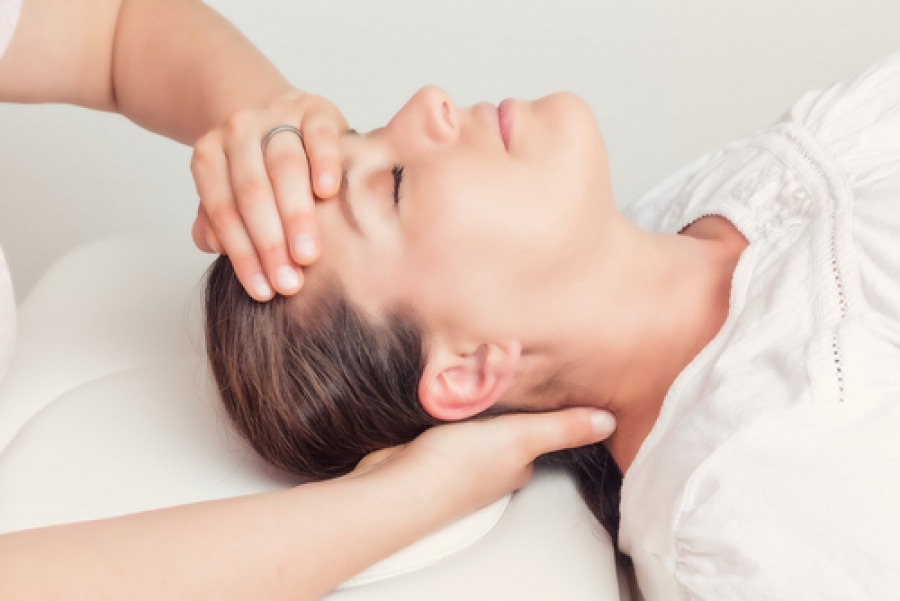
Do I need licensing to administer Cranial Sacral Therapy?
Licensing for Cranial Sacral Therapy varies depending on the region. Sometimes, one can be called upon to obtain a state license if one incorporates CST with other therapies, such as massage or physiotherapy.
The practice of Cranial Sacral Therapy operates under different license requirements based on the local regulations. Some states require a license for CST practitioners, especially when this modality is combined with other modalities such as massage or physiotherapy.
Most require an examination for licensure and continuing education hours to maintain the license in active status. In other areas, there may be fewer restrictions that allow certified CST to be practiced. It’s very important to check your local regulations about your practice before you start and make sure legality in your region.
Why become a Cranial Sacral Therapy Practitioner?
A Cranial Sacral Therapy practitioner enjoys personal fulfillment with flexible work schedules, enabling other people to improve their well-being by using holistic methods. This profession is rewarding with an increasing demand in alternative health modalities.
Approaching the decision to become a Cranial Sacral Therapy professional will have several benefits in personal and professional ways. This career is also rewarding since one feels satisfied, knowing that the clients are able to restore their physical and emotional balance by the use of a non-invasive and holistic approach.
The flexible work hours and the potential to have your own practice bring about work-life balance and autonomy. Demand for qualified CST practitioners has gone up due to increasing numbers of people embracing alternative health care; hence, this brings about many opportunities in wellness centers, private practice, and integrative health care. Personal growth and continued learning make this profession rewarding in the long term.
Conclusion:
A career in Cranial Sacral Therapy will be personally and professionally rewarding, as you support clients’ overall well-being. The demand for alternative therapies is growing annually, whether privately, at wellness centers, or among healthcare professionals. Proper certification and licensing, combined with ongoing building skills, will afford you an opportunity to thrive in this fast-emerging field while helping others along their healing path.
Carnial Sacral Therapy
Cranial Sacral Therapy (CST), is a subtle but effective bodywork that has gained popularity in recent times.

Many people believe that investing in cranial sacral therapy is not wise, however, it is important to comprehend the financial commitment that is required in adopting this unconventional treatment. The pricing of therapy is quite subjective to a number of factors such as the therapist’s location and experience level.
In this guide, we address common questions about the cost of cranial sacral therapy such as informing your prudence in expenditure. From knowing the session rates to insurance coverage, we will enlighten you on how to plan finances.
What is the reasonable cost of cranial sacral therapy?
A single cranial sacral therapy session will range from $75-150 and this is the average cost of a single session. For you to incur the stated fee for cranial sacral therapy, the therapist must be certified, experienced and be practicing that in some region. Specialists may charge more due to the advanced methodologies resistance or even just a more advanced experience.
Also, some therapists will have package options whereby paying for more than two sessions will reduce the total amount. If it is an issue, find out about it before making a booking. Lastly, part of the expense may be reimbursed from health insurance cover especially where this cranial sacral therapy is purely for medical purposes.
Will my insurance cover cranial sacral therapy?
As with most treatments, whether cranial sacral therapy is covered by insurance will depend on the provider and policy. A number of policies may, as part of their benefits coverage, include coverage for additional treatments especially if deemed medically appropriate by a physician.
You might have to obtain a referral or pre-authorization from your doctor for an insurance company to reimburse some or all charges for therapy. However, make sure that you inquire from your insurer prior to commencing therapy about what papers will be needed and if there will be any bill for the patient.
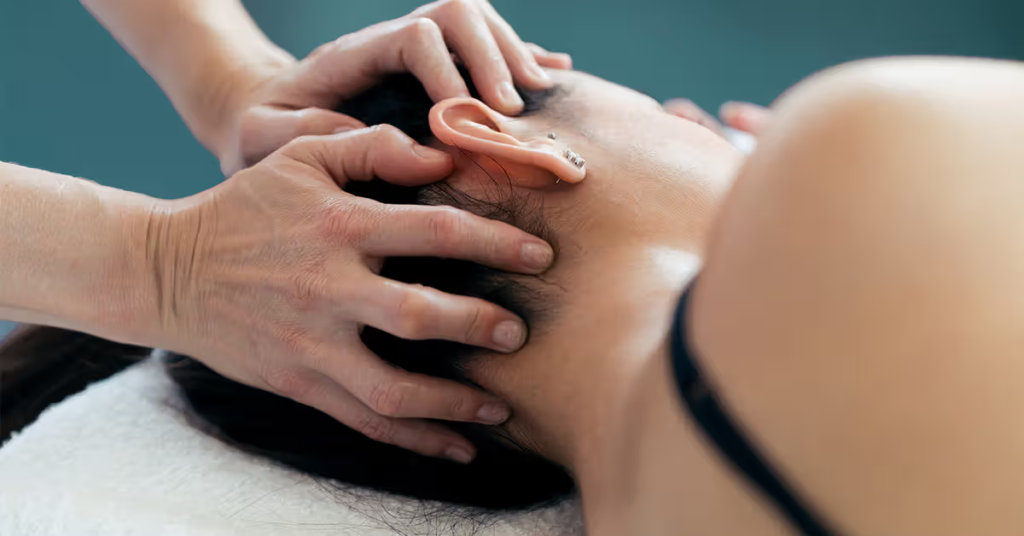
Do therapists offer package deals for multiple sessions?
Yes, many cranial sacral therapists can provide a few affordable session package plans for the initial treatment. These packages also include discounted rates on the cost per session, thus creating room for patients who might need multiple sessions within a short timeframe.
For example, one may purchase as many as five or as few as five sessions down the line and receive a discount that averages about 10-20%. This strategy is particularly advisable if you feel you will be in need of assistance for a longer period of time. Clarify the terms of the discounts concerning the package, completeness, and length of sessions followed by refunds on any other part that has not been consumed.
Are there sliding scale fees available for cranial sacral therapy?
Certain cranial sacral therapists will offer their clients a sliding scale fee for their treatment. Through this approach, the cost of therapy is linked to how much a patient earns or how much hardship they are going through; thus, those who seek such treatments and cannot afford them are able to access help.
Some sliding scale fees are offered to patients on an individual basis and this should be inquired about with the therapist. You may be required to submit proof of income before getting certain discounted rates.
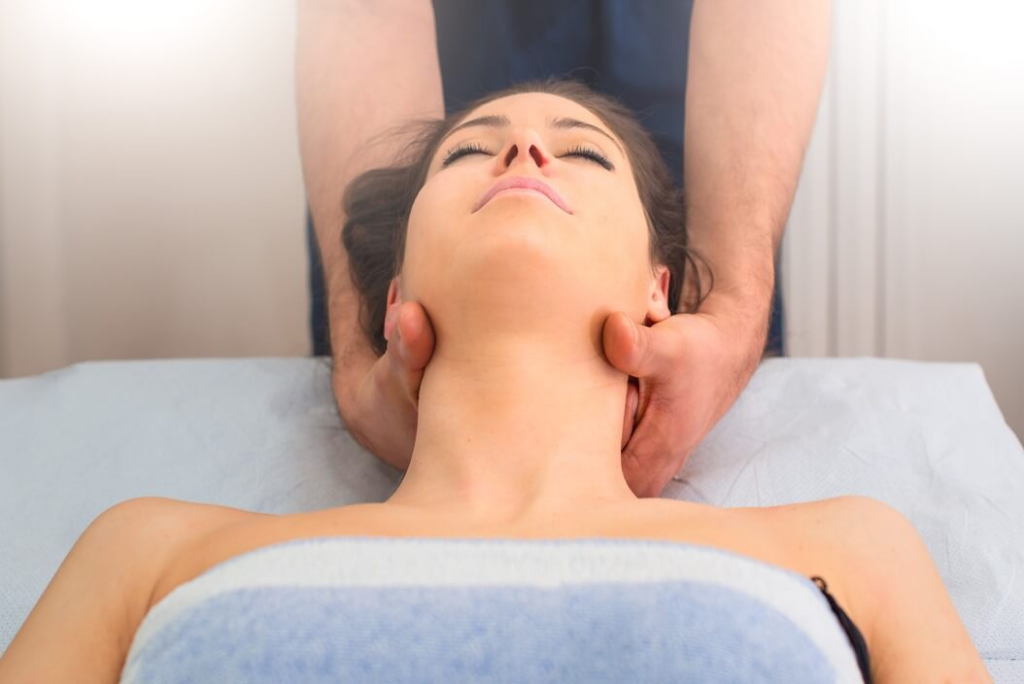
How can I budget for cranial sacral therapy?
Start by estimating the expenses that are likely to be realized for cranial sacral therapy by first discussing the number of sessions that will be required with your therapist. On what basis should payment be made? Are there any package deals available from the therapist? Am I able to make use of a sliding fee metric to manage the costs?
Furthermore, find out whether any insurance coverage you have allows some reimbursement for this type of therapy. By using quite a number of strategies, you are likely to do custom cranial sacral therapy without worrying much about the costs involved.
Are more experienced cranial sacral therapists more expensive?
Yes, more experienced cranial sacral therapists usually, it is not surprising, charge more fees for their services commensurate with the amount and level of training as well as the years spent practicing. Advanced practice therapists with specialization skills as well as certification or treatment of chronic conditions tend to raise more charges than average.
However, this additional expense is reasonable if you have specific treatment needs that require advanced procedures. When selecting a therapist consider the experience and how this experience matches with the health issues being treated. Although this remains an essential aspect to consider, the level of service has to be considered equally when making decisions.
Wrapping Up!
Investing in them may be prudent but costs associated with cranial sacral therapy will render it prudent in proper planning. Factors such as insurance coverage, packages, and sliding scale fees make therapy affordable to many. Understanding the qualifications of your therapist as well as the financial options available allows for the best course of treatment. Most importantly, work with your therapist as well as the insurance company to make the most of your money.
Carnial Sacral Therapy
Cranial Sacral Therapy (CST), is a subtle but effective bodywork that has gained popularity in recent times.
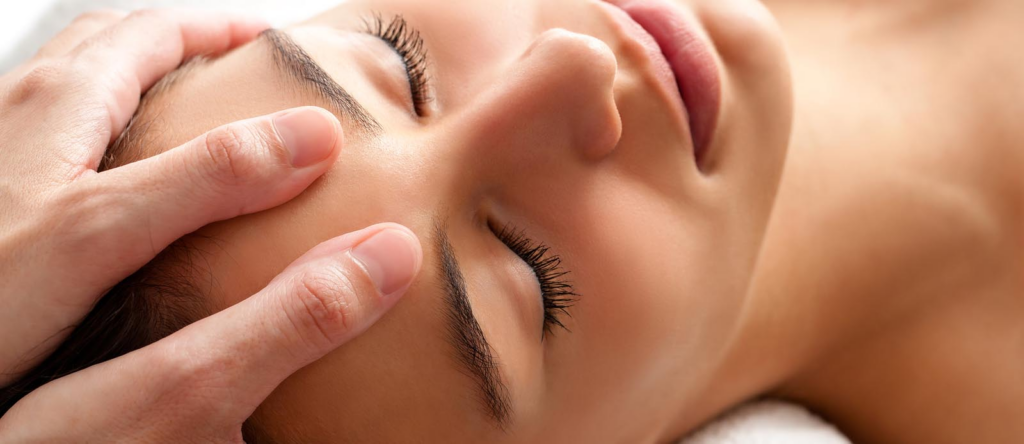
Cranial sacral therapy is characterized as a gentle and non-invasive technique that is well-accepted as being safe. Nonetheless, like all forms of treatment, it is crucial to be aware of the risks, side effects and safety measures to mitigate its adverse effects.
This guide addresses common concerns that those contemplating this therapy may have. We’ll cover the rare risks, contraindications for the therapy, and required precautions, so you will not have to second guess your decision for your health.
What are the possible risks associated with cranial sacral therapy?
Generally, cranial sacral therapy is safe, but the side effects of such therapy can lead to discomfort or a mild headache on rare occasions. A few patients still experience mild side effects post-treatment such as headache, discomfort, or fatigue but such symptoms are not long lasting.
People with circumstances such as recent head traumas, intracranial aneurysms, and blood clotting conditions may have additional risks. However, anyone with such conditions should consult a physician before treatment initiation because cranial massage may not be appropriate for them.
What are the possible side effects associated with cranial sacral therapy?
The possible side effects of cranial sacral therapy are discomfort, headache, and fatigue. Most of these symptoms are self-limiting and last for a maximum of about a day since it takes time for the body to get used to the therapy. Some people might experience emotional sensitivity, increased relaxation, or only be able to move with less effort after the treatment.
If these effects do not go away or if they worsen, it would be best to seek the therapist or health care provider’s opinion to find out whether there is a need to change something in the therapy itself.
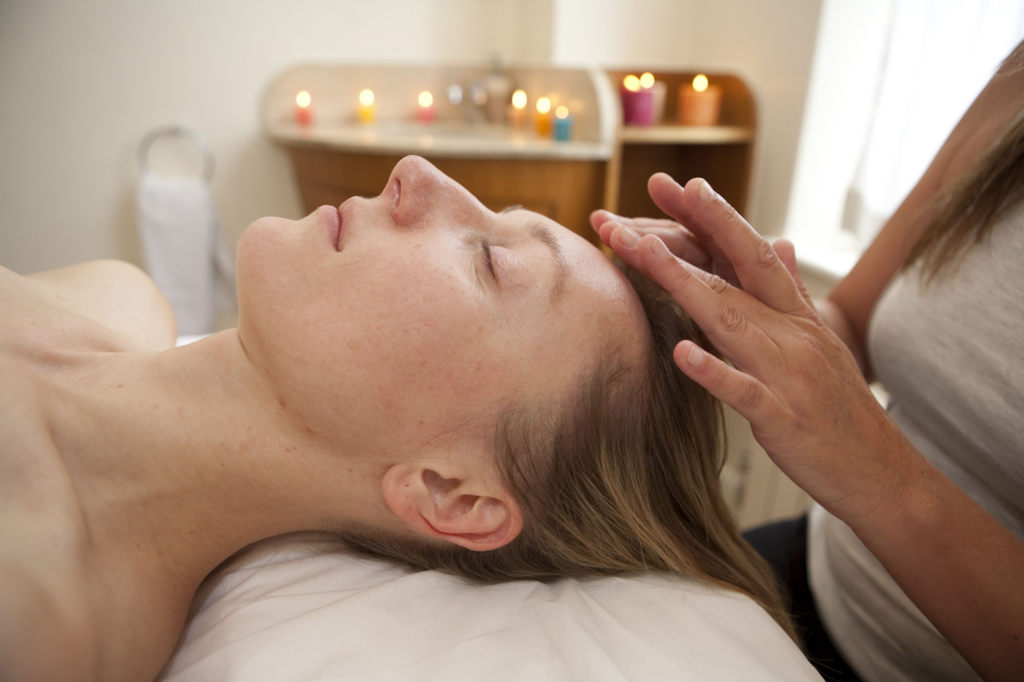
Who should avoid cranial sacral therapy?
Patients who have experienced recent head injury, have active infections present in the body, or have intracranial aneurysms and conditions characterized by pressure of cerebrospinal fluids should avoid this therapy because of the potential complications that may arise.
It’s important for patients suffering from such conditions to speak to a physician about the suitability for taking cranial sacral therapy. Sometimes, other methods that do not contain cranial sacral technique may be suggested for safety. Open communication with your therapist and medical provider is essential to protect your health.
Are there any long-term effects of cranial sacral therapy?
Craniosacral therapy is hardly associated with any long-term side effects. Generally, patients feel only a little headache or fatigue after craniosacral therapy which only lasts for a short duration and subsides after a single day. On the other hand, it is advisable that your therapist and you see a medical specialist should the discomfort persist for a longer period.
Chronic or continuing pain after therapy may suggest that you should stop therapy, or one or more of your treatment methods should be changed. To conclude, adverse effects are quite rare in terms of long lasting effects if a therapist skilled in doing the treatment is thorough in the techniques.
Are there any measures that one must consider prior to undergoing cranial sacral therapy?
You should always check with your healthcare provider before you start cranial sacral therapy, particularly when you are suffering from any serious medical ailment. Make sure you tell everything that relates to your medical history to your therapist so that he or she is able to design the treatment that addresses the concerns you have in a better way.
In addition, mention any medications or drugs that you are using, as they may affect the outcome of the therapy attachments. There is no doubt that cranial sacral therapy between you, your therapist, and your doctor is communication at its best.

Does cranial sacral therapy make some conditions worse?
This modality might be contraindicated for clients with specific conditions such as recent head trauma, aneurysms, and active infections, as this may aggravate symptoms and complications arise with manipulations of cranial and spinal areas due to the sensitivity or injury of already injured structures.
These are medical conditions that require a general practitioner’s advice before the start of cranial sacral therapy. Sometimes, other complementary treatments may be safer for the individual, or there may be ways to adapt the therapy to avoid adverse risks. Appropriate medical advice will go a long way in ensuring the safety of the therapy for every different health situation of an individual.
In Conclusion
Understanding risks, side effects, and the basic precautions taken in cranial sacral therapy is always the best way to ensure safety and effectiveness during a treatment session. Generally, it is a low-risk therapy; however, there are some conditions that demand great attention. Minimizing risks in this very gentle therapy might be done by selecting a qualified therapist, communicating openly about your health, and taking the right precautions. Always consult with your healthcare professional for any further questions or if you have had or have any medical concerns.
Carnial Sacral Therapy
Cranial Sacral Therapy (CST), is a subtle but effective bodywork that has gained popularity in recent times.
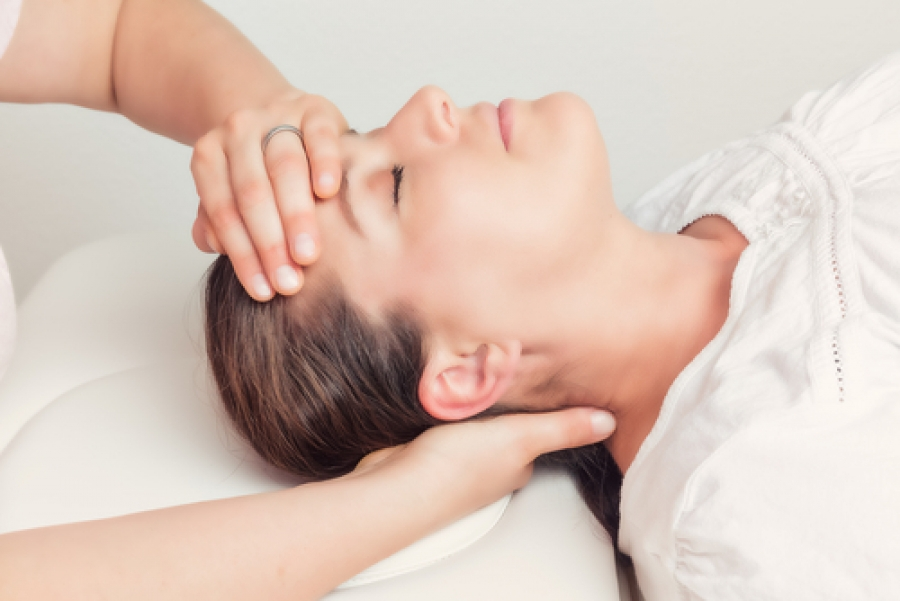
The search for a competent cranial sacral therapist can go a long way in enhancing your overall health and body functions. As this type of treatment is a subtle one, it requires some skills, and when it comes to finding the right specialist, several things should be taken into consideration. We’ll assist you with how to approach different factors of concern starting with education qualifications all the way to years of practice in a professional setting.
What are the important qualifications of a cranial sacral therapist?
Cranial sacral therapist has to undergo academic training from an appropriate cranial sacral therapist institution. Make sure that they include professional certifications from reputable bodies like the Upledger Institute and observation hours. Many therapists themselves have related health professions education such as osteopathic, massage, and chiropractor therapies hence better comprehending anatomy and the nature of healing.
Ongoing education is also an important aspect since it helps the therapist keep up with the newest methods being used. It’s also important to verify other professional associations at the cranial sacral therapy which would help them maintain standard procedure.
How many years of experience should a cranial sacral therapist have?
Cranial sacral therapists should have a few years of experience in the practice. More experience equals better skills acquisition in more cases. You might want to ask them regarding the specific condition they have worked on, for instance, chronic pain, headaches emotional tension, and if they have any positive outcomes from such treatments.
Therapists with experience may also bring a description of their work to give them credibility with the client’s features of the resume, where reviews and returns from clients are presented, and recommendations and case studies are directed to illustrate work experience with keywords reviews.

What can be expected from a session of cranial sacral therapy?
In cranial sacral therapy sessions, your therapist will use light, gentle touches, largely to the skull, spine, and sacrum, allowing him to release any deeply hidden tension and further enhance the natural cerebrospinal fluid flow toward the betterment of health in general.
Sessions are usually performed in relaxed environments for the patient. These can be 45 to 60-minute sessions, depending on what exactly your needs are, and follow-up is often recommended to maintain and improve results.
How do I validate the qualifications of a cranial sacral therapist?
Certification, training, and membership in professional associations are three ways to validate qualifications. This can easily be shown on their websites or presented in a clinic by most of the certified therapists. Also, professional membership in such organizations as Craniosacral Therapy Association (CSTA) professionals show their discipline and qualifications.
At the same time, you can also confirm these organizations’ membership or grounds of practice with those organizations. Finally, it is advisable to read referrals and client feedback to ascertain the authenticity of their practices.
What are the fees for cranial sacral therapy?
The fees of cranial sacral therapy range between $75 to $150 with variations arising from the geographical location of the therapist and level of experience. Those who have advanced degrees in their field or many years of practice tend to base their charging on the higher rates within the spectrum.
There are low-cost practitioners available for longer package deals to make their services cheaper. If budget is a concern, you can ask about these packages or see if any sliding scale fees are available. It is essential to find out if your health insurance plans cover alternative treatment services such as cranial sacral therapy.

Are there any risks associated with cranial sacral therapy?
Cranial sacral therapy is generally considered safe for most people. However, patients with recent head injuries, obstruction of blood vessels by clots, or intra-cranial aneurism should consult a doctor before starting therapy. These conditions may make cranial manipulation unsafe or require modifications of the therapy approach.
Most individuals, on the other hand, do not have any major risks employing cranial sacral therapy since there is no violent manipulation and instead skilled touch is applied. Every patient has to sign a waiver to guarantee protection of the therapist but the therapist should try as much as possible to evaluate the patient’s history.
In Conclusion
Researching the credentials, training, and experience of a cranial sacral therapist is a vital step when hiring induction therapy. By knowing the aspects that one should be keen on, all patients can choose the right induction therapist who provides ideal care. Take your time in confirming if the professional is competent, and you can also ask him whatever is necessary, or get in touch with your doctor. With a qualified therapist, cranial sacral therapy is quite effective in enhancing both emotional health and physical wellness.
Carnial Sacral Therapy
Cranial Sacral Therapy (CST), is a subtle but effective bodywork that has gained popularity in recent times.

Cranial Sacral Therapy is a gentle treatment that has attracted much interest in complementary medicine due to its light and unobtrusive intervention in healing. Although it remains in its infancy, existing studies do illustrate some interesting leads that may apply to its benefits.
Understanding the scientific evidence that underlines CST will therefore make the patients more knowledgeable about how to choose this modality of therapy for pain management and stress and, generally, wellbeing. The following are the key findings of research into Cranial Sacral Therapy.
In what ways does research show Cranial Sacral Therapy assists in pain?
According to research, Cranial Sacral Therapy releases tension from the craniosacral system, hence relieving chronic pain, especially in cases involving migraine and lower back pain.
Research has shown indications that CST relieves chronic pain as it targets the root of the problem, which is the tension within the craniosacral system. A 2011 study, for example, indicated that migraine patients had a reduction in the frequency and intensity of pain after a number of sessions.
Similarly, patients who suffered from chronic lower back pain reported improvement once they had undergone CST treatment. These gentle manipulations enable the body to release its physical restrictions, hence enhancing mobility while reducing discomfort.
Although larger-scale and more robust trials are needed, available studies tend to indicate that CST may indeed constitute a potentially effective pain management approach in a series of ailments.
Will Cranial Sacral Therapy help reduce stress and anxiety?
Yes, studies have shown that Cranial Sacral Therapy helps reduce stress and anxiety by promoting relaxation and rebalancing the autonomic nervous system.
Various studies point out that Cranial Sacral Therapy has beneficial results on the stress and anxiety levels. For example, in one, it was noted there was a significant reduction in the level of stress following several sessions of CST and this influence lasted long.
The soothing effect of the treatment relaxes the autonomic nervous system, reduces the level of the stress hormones such as cortisol, and acts as a sedative. Second, CST can be used in a very gentle and non-invasive way, which makes this therapy particularly suitable for patients who suffer from anxiety disorders since it creates a safe place where one can finally let go of much physical tension and pent-up emotional baggage.
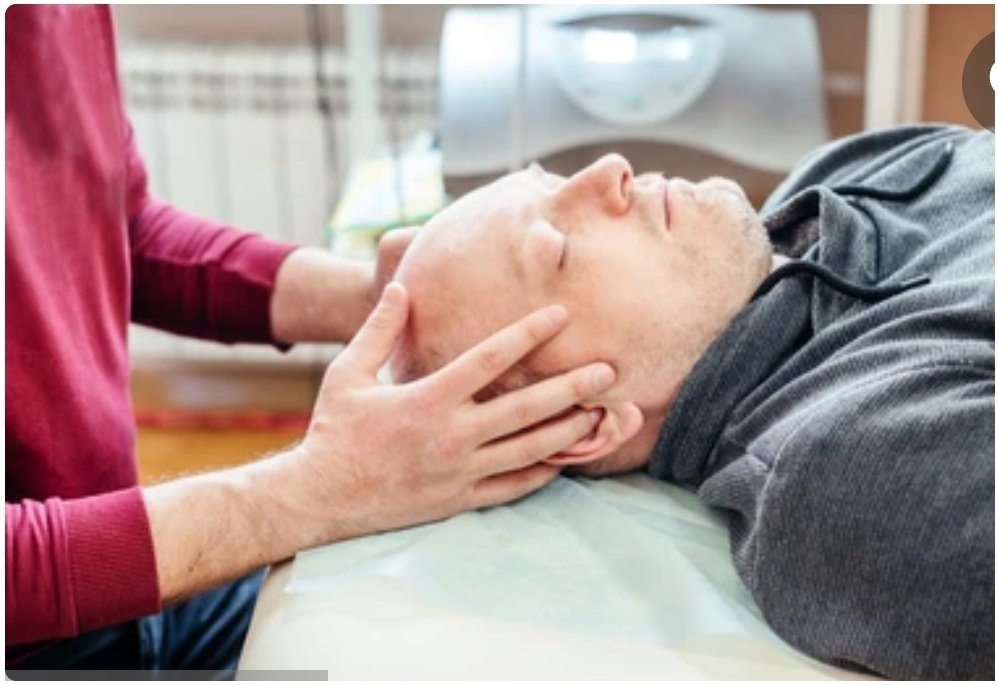
How does Cranial Sacral Therapy affect sleep quality?
Research has demonstrated that Cranial Sacral Therapy aids in improving sleep by reducing one’s stress levels, releasing muscle tension, and relaxing the individual.
Sleep disorders like insomnia are usually associated with stress and discomfort in the body. The effect of CST in offering relaxation and reducing tension has been utilized in improving the sleep of patients.
A small clinical study demonstrated improved sleep patterns in subjects, following a number of sessions, with longer times of continuous sleep. Because the manipulations in the body’s connective tissues are gentle, there is a tendency toward rest, and this improves overall sleep.
Does Cranial Sacral Therapy work for neurological conditions?
Preliminary evidence suggests that CST may benefit people suffering from neurological disorders such as multiple sclerosis, autism, and ADHD because the treatment enhances nervous activity.
In as much as research in the therapy is at its infancy stages, some studies indicate that Cranial Sacral Therapy may be helpful in the treatment of people with neurological conditions. Improvements in mobility and pain levels were observed, for example, in a consistent number of CST sessions in patients with multiple sclerosis.
Children with autism and ADHD may, therefore, show some improvement in focus, emotional regulation, and sensory processing with CST treatment. Such positive results using this form of therapy are likely to stem from its basis in balancing the nervous system and promoting overall body alignment.
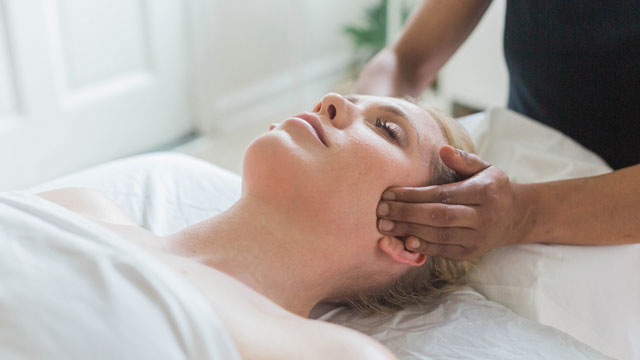
How does Cranial Sacral Therapy improve mobility and flexibility?
Studies have concluded that Cranial Sacral Therapy can be used to increase mobility and flexibility by eliminating the constraints on the connective tissues and the craniosacral system.
CST focuses on the release of restrictions in connective tissues that may enhance mobility and flexibility, especially in patients with chronic pain or musculoskeletal conditions. This modality has been shown to be particularly helpful in the restoration of range of motion in various patients with conditions such as fibromyalgia or arthritis.
As areas of tension are released in this gentle therapy within the craniosacral system, the body regains its natural alignment and patterns of movement. Patients often report that they are much better at moving around easily without much stiffness after frequent CST sessions, and it has good potential for long-term mobility.
Are there any Side Effects of Cranial Sacral Therapy?
Cranial Sacral Therapy generally does not have many side effects, though cases of mild dizziness or post-session fatigue are reported.
Cranial Sacral Therapy has been said to be one of the lightest and least invasive therapies; thus, it is safe for almost anyone who comes across it. Few side effects are recorded, and the ones that show up are mild, such as dizziness or fatigue after a session.
They are generally temporary, and their occurrence is considered a normal response of the body to the sudden release of tension and toxins during a therapy session. Patients usually are counseled to drink much water and rest afterward to minimize discomfort.
How many sessions of Cranial Sacral Therapy are needed to feel noticeable benefits?
Individual conditions vary greatly in terms of the number of sessions; some may realize an improvement after just one treatment, while others will take several in order to realize beneficial outcomes.
The number of sessions a person will have depends on the condition and desired outcome. This may be felt deep within through the release of pain, relaxation, or emotional stability even after the first session.
However, in cases where a condition is complex or chronic-for instance, chronic physical pain or emotional trauma-several sessions may be needed to lastingly clear it. In this regard, the therapist will advise on an individualized treatment schedule, and many clients indeed go for regular maintenance sessions.
Conclusion:
Cranial Sacral Therapy has shown promise in research for its ability to address a wide range of physical and emotional conditions. Though more rigorous studies are still indicated, the existing evidence suggests significant benefits in regard to pain reduction, sleep, improved mobility, and general well-being. With minimal side effects, CST thus offers a mild, non-intrusive alternative to those searching for relief either from chronic conditions or stress-related problems. Further research will continue to see CST’s role in holistic health increase.
Carnial Sacral Therapy
Cranial Sacral Therapy (CST), is a subtle but effective bodywork that has gained popularity in recent times.
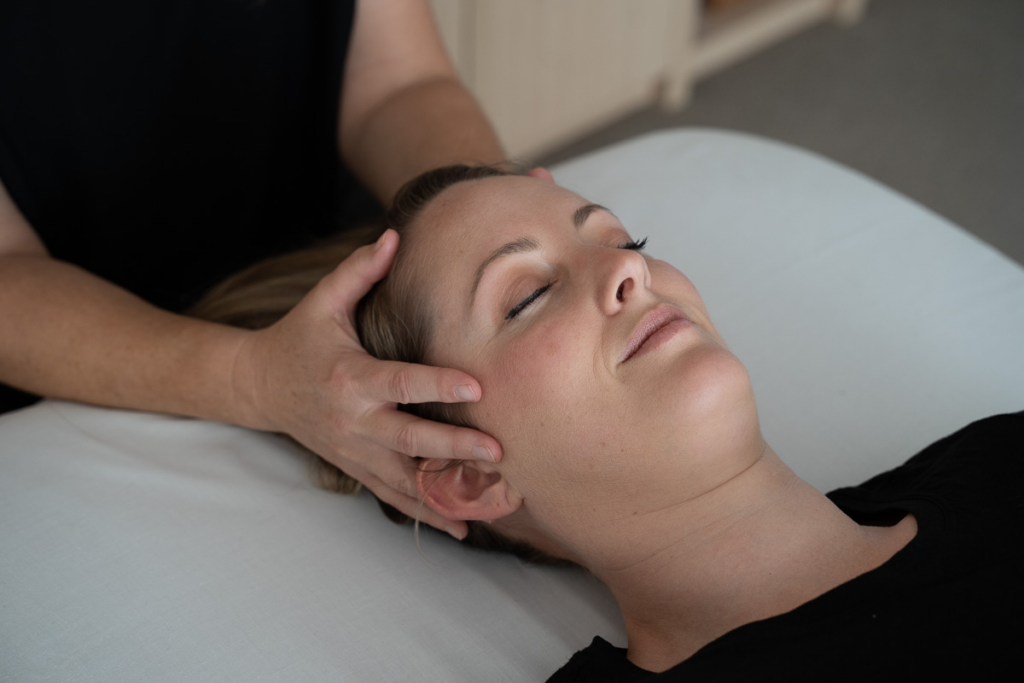
CST is considered a holistic healing treatment for a variety of therapeutic benefits it may present. This is done through the use of gentle, non-invasive techniques in the alleviation of many physical, emotional, and mental problems. This therapy, therefore, suits individuals of all ages in relation to accelerating relaxation, pain relieving, and restoring normal health. In this guide, we are going to explore the particular benefits of the healing of CST and exactly how the procedures work in improving health across many dimensions.
How does Cranial Sacral Therapy relieve chronic pain?
Cranial Sacral Therapy relieves chronic pain by releasing tension from the craniosacral system in a soft, gentle way. This could also improve the flow of fluids and loosen tight muscles.
Chronic pain, as commonly found at the back, neck, and head, is often due to a pull on the connective tissues of the body or restrictions within the craniosacral system. CST enables the release of such restrictions using light, hands-on techniques, thus restoring normal alignment and function in involved areas.
The gentle manipulations also promote the free flow of cerebrospinal fluid, which can further alleviate pain and facilitate healing. Consequently, many people realize considerable pain relief after a number of sessions in CST, especially in pains related to migraines, fibromyalgia, and lower back.
Does Cranial Sacral Therapy reduce stress and anxiety?
Yes, Cranial Sacral Therapy can help promote one’s relaxation and emotional balance in order to reduce stress and anxiety by soothing the nervous system and releasing stored emotional tension.
CST is well-recognized for providing a soothing effect on both the body and the mind, thus providing an effective therapy for stress and anxiety-related disorders. It soothes the autonomic nervous system, which mediates the stress response.
The therapist uses a very gentle touch on the head, neck, and along the spine to help the body release emotional tension stored within the tissues of the body. This release, in conjunction with the general relaxation effect that occurs from the session, encourages peace and clarity of mind.

How does Cranial Sacral Therapy help to improve sleep quality?
Cranial Sacral helps with sleep by offering a balance of the nervous system, releasing tension stored within, and triggering a state of relaxation that allows falling asleep and staying asleep easier.
Sleep disorders, including insomnia, often develop due to stress, chronic pain, or an overactive nervous system. Cranial Sacral Therapy works in soothing the parasympathetic nervous system responsible for the rest-and-digest functions of the body.
By careful manipulations around the head, neck, and spine, CST releases tension and helps relax the body further. It is this relaxation that shall give way to a better quality of sleep since the mind would shut down, and the body would be prepared for rest. With routine treatments, many clients report CST profoundly improves their sleep arrival and quality, with greater hours of sleep without interruption.
Does Cranial Sacral Therapy sharpen mental clarity and focus?
Yes, CST can improve mental clarity and focus by dissolving stress and tension in the body to heighten the function of the brain and improve cognitive performance.
Mental clarity may be dulled by chronic stress, chronic fatigue, or discomfort in the body. Cranial Sacral Therapy supports the resolution of such underlying issues by inducing deep relaxation and releasing a number of restrictions in the craniosacral system.
This relieves any obstructions that prevent the easy flow of cerebrospinal fluid throughout the brain. As tension releases from the body, many clients report increased mental clarity, improved focus, and sharper cognitive function.
The calming results of CST support reduced mental fog and fatigue; therefore, concentration and productivity can be enhanced. Regular CST has been reported by many clients to leave them thinking more clearly, more robust mentally.

How does Cranial Sacral Therapy help with emotional healing?
Cranial Sacral Therapy helps in the release of stored emotional traumas and tensions that help the body and mind process and recover from the unfortunate happenings of life.
The deposition of traumatic experiences and stressors usually occurs within bodily tissues. Such physical imbalances, which create mental and physical problems, can be treated using a gentle, hands-on approach.
Cranial Sacral Therapy enables these stored emotions to be released by working non-invasively and gently with the body’s energy and tension patterns. A session may result in your feeling an emotional shift or allowing long-held stress or trauma to release.
This allows deeper emotional healing to occur whereby one is able to let go of negative feelings and move toward greater emotional balance. With time, this gets processed and resolved in continuous CST sessions, thereby improving emotional well-being and bringing inner peace to the client.
Can children receive Cranial Sacral Therapy?
Yes, Cranial Sacral Therapy can be safely utilized on children to help them with colic issues, sleeping problems, developmental delays, and stress.
Cranial Sacral Therapy can be more effective in infants. It is also a gentle, non-invasive treatment indicated for colic, feeding issues, sleep disturbances, and even behavioral or developmental problems.
Because CST works with the intrinsic healing process of the body, it is most effective in young, still-growing children whose bodies are more pliable. For children with problems in sensory integration or stress-related behaviors, the CST would offer a soothing experience that would ease the nervous system.
How does Cranial Sacral Therapy support general health and well-being?
Cranial sacral therapy nourishes the body’s self-healing processes, which upgrades physiological, emotional, and mental health with light manipulations.
CST is a non-invasive holistic healing modality; hence, it treats the human body as one unified system. By gently releasing restrictions within the craniosacral system, CST enhances the free flow of energy and cerebrospinal fluid, enabling the body to function optimally.
This improves general well-being by clearing up physical pain, emotional stress, and mental fatigue. CST also supports the immune system, helps with detoxification, and advances the body’s natural self-healing capability. Many clients re-establish balance and vitality, feeling more in tune with their bodies and better able to deal with daily stresses.
Conclusion:
CST thus offers a gamut of healing benefits, making it multifunctional for patients who want physical, emotional, and mental relief. Whether one is afflicted with chronic pain, or stress, or even looking for overall wellbeing, the various CST modalities support the natural healing processes of the body. Regular sessions help keep this balance maintained, discomfort reduced, and long-term health promoted. For those looking to explore holistic therapy, CST comes out to be a safe yet effective option with deep-set results.
Carnial Sacral Therapy
Cranial Sacral Therapy (CST), is a subtle but effective bodywork that has gained popularity in recent times.
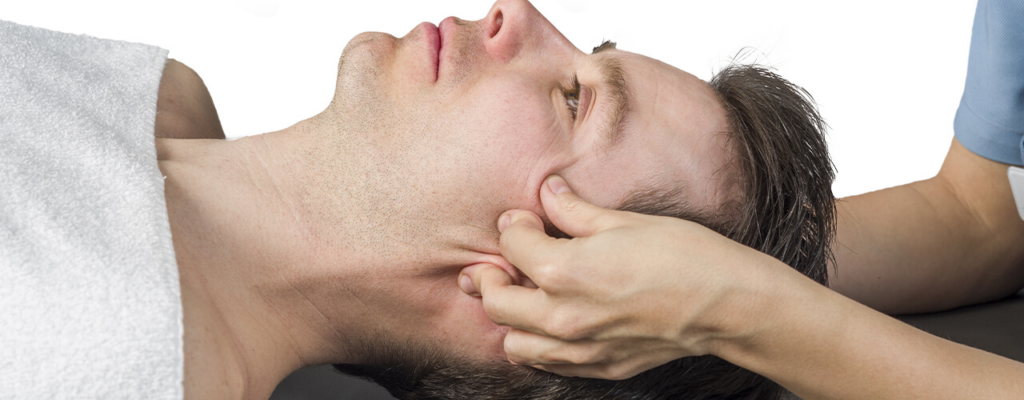
Cranial Sacral Therapy, or CST, is a non-invasive, holistic technique that works with the body’s craniosacral system. Many find this work very relieving and helpful in reducing pain, stress, and enhancing overall well-being. Knowing what to expect during a CST session will help any potential clients feel more at ease and confident in the process. What to expect from an initial consultation to post-session relaxation is described hereinafter in a step-by-step guide and is ideal for newcomers to the therapy.
What does the initial consultation consist of in Cranial Sacral Therapy?
The therapist discusses your case history, health concerns, and goals of the session during the initial consultation. It helps to provide a tailored treatment for your needs.
The consultation generally covers the discussion regarding your present health, previously obtained medical conditions, and specific concerns or signs that you may be plagued with currently.
This talk also helps the therapist understand your needs and take proper judgment toward your session. A therapist may also use this time to explain the basic principles of CST, the areas they’ll focus on, and answer any questions you might have.
How does the therapist prepare a session of Cranial Sacral Therapy?
The therapist prepares by making sure the environment is quiet and peaceful. They make sure the treatment table is comfortable and arrange pillows to place under your body to facilitate relaxation.
The therapist will, beforehand, set up such an environment that is relaxing. They will ensure the treatment table is comfortable and that pillows are placed beneath your body to relax it. This may involve turning some of the lights off, playing soothing music, and appropriate room temperature.
Next, they will arrange the treatment table to your liking and place pillows or bolsters to support your back, neck, and legs. The purpose is to have you become as relaxed as possible and comfortable before any physical work commences.

What does a session of Cranial Sacral Therapy involve?
Some of the other salient features in conducting Cranial Sacral Therapy involve light touches to the system for releasing tension. Light pressure will be placed, by the therapist, on the head, neck, and spine to allow the body to relax and recover.
During the procedure, the therapist touches indeed very lightly-on key areas of the head, neck, and the bottom of the spine-with less than five grams of pressure. These small manipulations are made in an attempt to release tension and create a smoother flow in the cerebrospinal fluid that envelops the central nervous system.
The therapist might also diagnose the rhythm of the craniosacral to check for any imbalances. These gentle techniques relax the muscles and soft tissues, which in turn will reduce pain and improve flexibility and general health. Because CST is non-invasive, it is suitable for people from newborns to the elderly.
How long does a session of Cranial Sacral Therapy usually last?
In Cranial Sacral Therapy, the sessions usually run for 45 to 60 minutes; some may be even less or a bit longer, depending on need and areas of concentration.
Most sessions of Cranial Sacral Therapy typically run around 45 to 60 minutes, though sometimes they can be longer or even take up less time, depending on your specific health needs and concerns.
During this, the therapist methodically works over different areas of the body with a light touch and gentle manipulations to release restrictions in the craniosacral system. Of course, other clients may need shorter sessions, especially when targeted work is necessary, and some may require extended sessions if many areas must be addressed. Whatever the length of the session, the aim is always to reach that deep state of relaxation and healing.
What is the best thing to wear to a session of Cranial Sacral Therapy?
The best thing to wear for a Cranial Sacral Therapy session is loose, comfortable clothing. The therapy treatment is non-invasive, so you will not need to undress, and comfort enhances the likelihood of relaxation and healing.
Wear loose, comfortable clothing for your CST session in T-shirts and yoga pants or athletic wear. Because the therapist will be using light pressure through your clothes, anything that’s too tight can make you have to work harder at relaxing.
This is a non-invasive therapy and works through gentle touch, so there’s no need undressing. He will also arrange your pillows and other supports to make you most comfortable to enhance your relaxation and to enjoy the session. Getting comfortably dressed will make you pay proper attention to the benefits of the therapy.
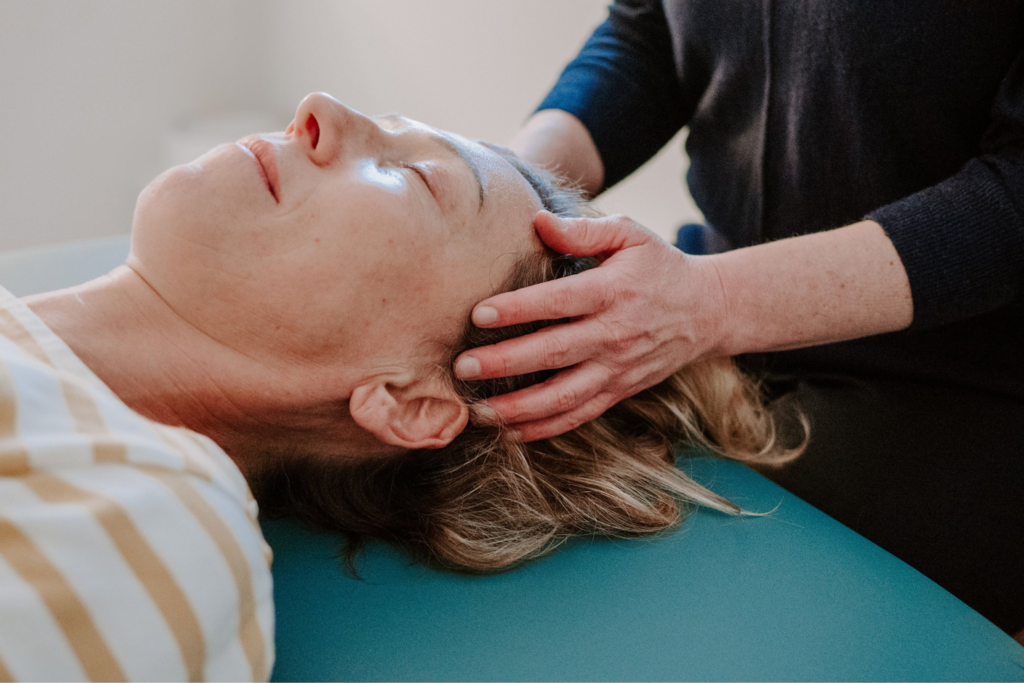
What can you expect after a session of Cranial Sacral Therapy?
After the Cranial Sacral Therapy, clients often feel relaxed and may notice improvements in pain levels, sleep, and overall well-being. Drinking water and resting afterward are recommended.
After the session, the clients usually feel a deep level of relaxation simulating how one feels after a deep massage session or even meditation. Many participants report feeling more ‘in balance’, both physically and emotionally; most indicate positive changes of pain levels or mobility.
It is not uncommon for a person to feel quite sleepy afterwards, so it is generally advised to take it easy and stay hydrated for the remainder of the day. Most likely, water will help with the possible flushing out of toxins released due to the process.
How much Cranial Sacral Therapy is required?
The number needed depends upon individual goals and conditions. Several notice benefit after one session, while others may take several to reach complete value.
How much Cranial Sacral Therapy is needed is an entirely different thing because it varies from person to person and may be related to how complex a condition treated might be. Some people feel a huge difference right from the first session if their problem is minor.
For chronic disorders, deeper traumas of emotions or the physical body, and pain that has been there for a very long time, multiple sessions are recommended. The therapist will assess your progress after each session and could suggest a treatment plan comprising regular appointments.
Conclusion:
Cranial Sacral Therapy is both versatile and gentle. It tries to help a wide range of physical, emotional, and mental health concerns. By knowing what actually goes on during a session, can help someone be prepared for it and more sure about the process. Whether you’re seeking relief from chronic pain or looking for ways to improve overall well-being, CST offers a non-invasive and deeply relaxing way of supporting your body’s natural healing capabilities.
Carnial Sacral Therapy
Cranial Sacral Therapy (CST), is a subtle but effective bodywork that has gained popularity in recent times.

Providing constructs of Cranial Sacral Therapy (CST) with regular as well as complementary therapies gives a more comprehensive method of treatment. Since CST specifically targets the enhancement of the self-healing phenomenon of the patient’s body, it can prove to be an adjunct to conventional such as pharmacological treatments as well as alternative therapies.
Can Cranial Sacral Therapy be combined with chiropractic care?
Yes, Cranial Sacral Therapy is an add-on to chiropractic treatment. Though cervical subtle adjustment and chiropractic focus on the alignment and nervous system function, CST differentiates by using soft touch whereas chiropractors use harsher thrusting techniques. They complement one another in that they all contribute to the proper positioning and health of the entire organism.
In doing so, these two techniques give an adequate solution to issues of structural orientation as chiropractic correction offers rapid corrections while CST gives lesser, but mild corrective approaches which relax the body. Patients with chronic pain as well as tension and for whom body movement has become a challenge do well with these combined therapies and have less pain, fewer inflammatory signs, and better function of the body.
Can Cranial Sacral Therapy and massage therapy be used together?
Cranial Sacral Therapy has also been reviewed to be compatible with the massage therapy. It must be noted that where massage aims to bring about relaxation of muscle tissues and relief of muscle tension, CST aims at bringing a release of the craniosacral system.
Working in conjunction, patients are able to reach a deeper state of relaxation, improve their stress coping abilities, and recover from chronic pain or emotional distress much more effectively. There is an interaction of these therapies where one impacts on the effectiveness of the other thus, enhancing the general well-being with consideration of both muscle and nervous system states.
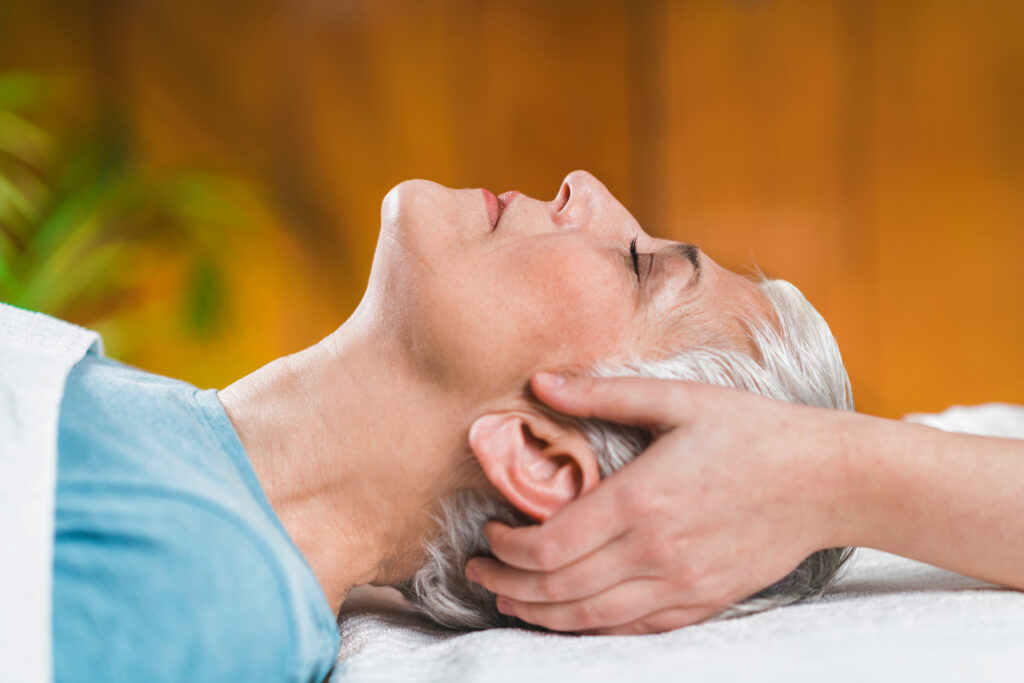
How does Cranial Sacral Therapy integrate with acupuncture?
Cranial Sacral Therapy is particularly useful as an adjunct to acupuncture in creating a sense of equilibrium and calm. Whereas acupuncture uses needles to encourage energy through certain points within the body, CST employs light hand movements to relieve stress on the craniosacral system, thereby making acupuncture more effective.
The synergy of ancient Traditional Chinese Medicine and modern CST offers new possibilities for healing. Acupuncture restores and balances energy flow, while CST facilitates the resources for relaxation and self-repair of the body. Such an approach to treatment is likely to bring along positive improvements not only in physical well-being but also psychological ones.
Can Cranial Sacral Therapy be used alongside physical therapy?
Yes, it is possible to use Cranial Sacral Therapy and physical therapy at the same time. With the help of CST, one more dimension is added since the craniosacral system is also treated and given free of tension which helps in attaining equilibrium in the central nervous system.
Patients recovering from surgery, suffering from chronic pain, post-injury rehabilitation, fibromyalgia, or chronic fatigue syndrome, may even benefit from complementary remedies of CST and Physiotherapy. As PT focuses on strengthening and restoring function, CST reduces the stress which is normal underneath any form of recovery facilitating the natural healing process helping a quicker and more efficient recovery.
How does Cranial Sacral Therapy enhance psychotherapy or counseling?
Apart from enhancing the emotional and psychological aspects of the therapy process, Cranial Sacral Therapy also assists patients in overcoming such challenges as trauma, anxiety, or stress. As noted before, Cranial Sacral Therapy (CST) offers more than the mere healing of emotional traumas. This method assists in releasing the tension present in the cranial sacral region of the body.
CST allows patients to feel more relaxed enabling them to let their emotions go and receive greater therapeutic psychological comprehension during sessions. Quilty or anxiety-troubled patients, particularly PTSD, frequently make better progress using such a combination as CST and dialogue therapy – physical expulsion being a useful supplement to treat emotional pain.

Can Cranial Sacral Therapy be combined with yoga?
Yes, Cranial Sacral Therapy and yoga can be practiced together in a beneficial way. While CST alleviates restrictions in the cranial and sacral systems, increasing stress reduction, the two help because yoga improves physical flexibility, and the calmness of the mind.
Regular CST treatments alongside practicing yoga can enhance both sensitivity towards and stress release from your body, bring mental peace to the practitioner, and make you a more effective teacher. For those people who wish to be physiologically and emotionally balanced, their wish will be fulfilled through the union of yoga therapy and CST.
How does Cranial Sacral Therapy integrate with conventional medicine?
CST works best as an adjunct to traditional medical methods especially in the scenario of chronic pain, after surgery, or with treatment of stress disorders. Conventional medicine looks at the problem from the view of what drugs, operations, or other abrasive means can get rid of pathological processes.
CST in contrast seeks to improve the potential of the body to heal itself by relieving the tension in the cranio-stress system. Hence by adopting CST in the practice of modern medicine, the patients obtain a better treatment that combines the modalities of modern medicine and CST to achieve optimal relaxation and stress relief while enhancing the efficacy of medical therapies.
In Conclusion
While this approach combines CST with both established and alternative treatment modalities, it does provide an effective strategy for attaining health and wellness. Whether it is chiropractic, physical, or acupuncture therapy, these procedures enhance the state of the body, therefore, improving the overall results of CST treatment. This comprehensive approach to health facilitates the resolution of both physical and psychological issues and allows good integration of time-honored medicine CST, and other complementary therapies.
Carnial Sacral Therapy
Cranial Sacral Therapy (CST), is a subtle but effective bodywork that has gained popularity in recent times.
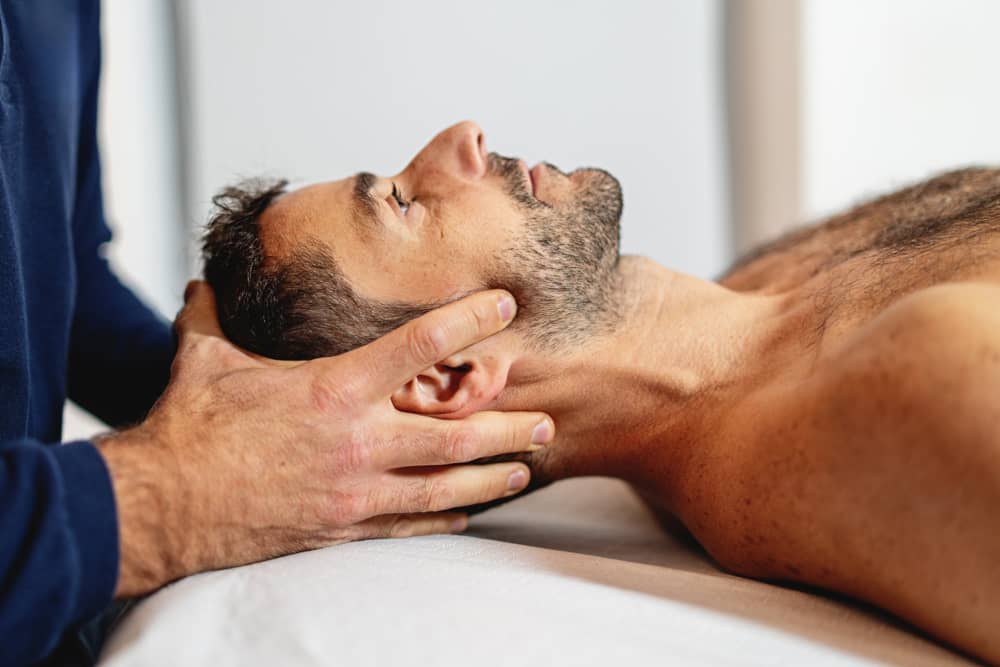
Cranial Sacral Therapy (CST) is an integrated technique that uses a light touch to stimulate healing in the body. To comprehend how CST operates as a form of therapy, it is important to consider its basic concepts and modalities.
This article focuses on the main ideas and techniques of CST, providing detailed practice, efficiency, and advantages for the body.
What are the main concepts of Cranial Sacral Therapy?
The main concept of craniosacral therapy is balancing the central nervous system and other bodily activities. Specialists presume that any restriction or imbalance in the craniosacral structure can result in physiological or psychological health problems.
As such, gentle rocking of the cervical vertebra, membranes, and spinal fluid is intended to normalize the extreme functioning of the body in order to reduce stress and allow for better operations of the body system. Since it enhances the body itself, CST is effective in the treatment of many disorders including chronic pain, a range of headaches, or even emotional traumas that may be difficult to treat.
How Cranial Sacral Therapy Works?
CST helps work by locating obstruction and restrictions around the craniosacral system which inhibits the body from working at its optimal capacity. The therapist employs light, intentional manual contact, usually on the head, neck, and/or lower back, where gentle pressure is applied.
By doing so, these light moves assist in releasing any physical barriers or dysfunction that is either causing pain or any other dysfunction. The practice of CST assists in supporting realignment and stress reduction and return to equilibrium, which facilitates healing by restoring normal motion to the craniosacral system.
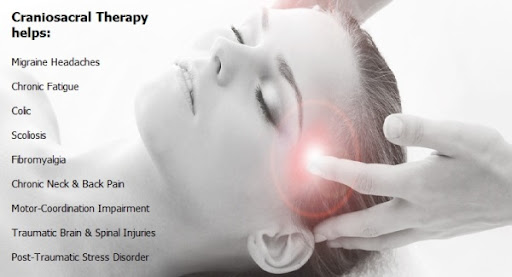
What are the benefits of Cranial Sacral Therapy?
There are several advantages of CST making it applicable in both physical and emotional ailments. Further, treatment makes patients to experience lesser pain and mobility in their bodies, as well as bettering the mental aspects thereafter. CST relieves even chronic headaches, and migraines, neck and back pain as well as stress and trauma by relieving tension in the craniocerebral system.
Some of the effects of this therapy are leaning towards relaxation and reduced levels of tension which consequently results in better health. A number of their patients have decreased levels of fatigue and increased immune response following regular CST treatments.
What techniques are used in Cranial Sacral Therapy?
The techniques of CST palpation and traction. During palpation, practitioners note subtle movements and rhythms in the craniosacral system and can therefore pinpoint areas that are afflicted by an imbalance or a restriction. It is pressure, which is to relieve such areas of tension so as to correct the imbalance.
Pulling or traction is also at times employed to slowly elongate the back and relieve the pressure and weights the cranial bones or membrane may have. These are very simplistic techniques that cause minimum invasions to the body as they utilize the natural ability of the body to heal both physically and emotionally. Each session is individualized as per the requirements of the patient.
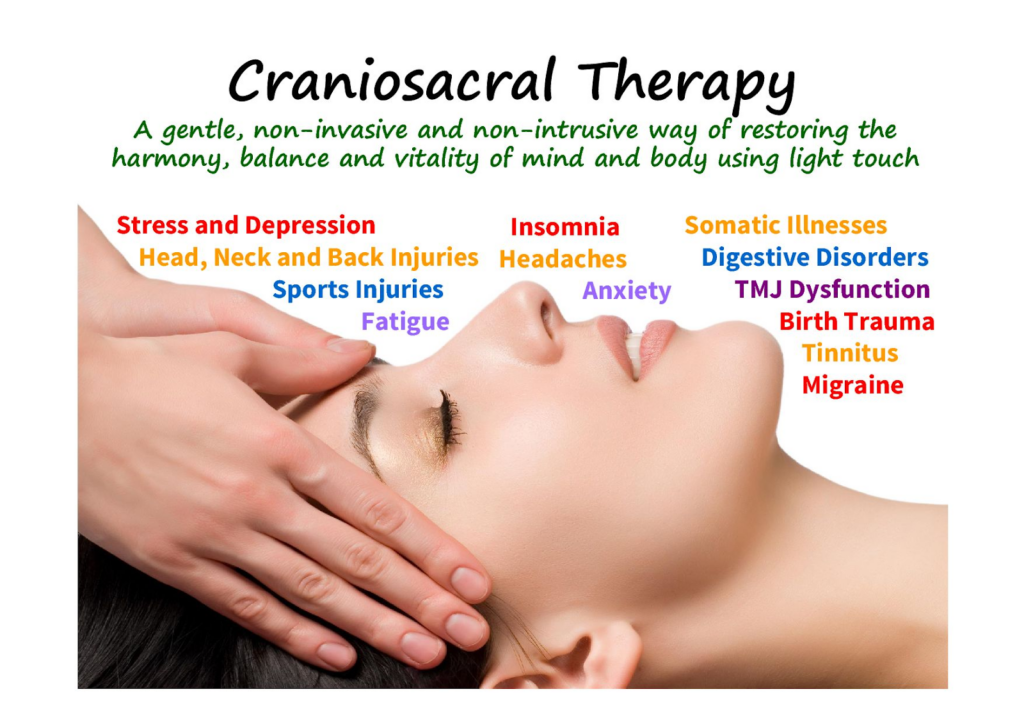
How is Cranial Sacral Therapy performed?
Cranial Sacral Therapy is performed with the client lying, fully clothed, on a massage table. Gentle, hands-on techniques, by the therapist, are used to gather information on areas such as the skull, spine, and sacrum for craniosacral system imbalances and to release restrictions.
Using light contact, the therapist will palpate the craniosacral system to feel out any irregularity in motion from cranial bones and/or fluid movement.
When detected, the therapist will delicately manipulate such areas by using slow, subtle motions that restore the balance of such areas. This manipulation could help release tension, increase fluid movement, and enhance the body’s natural self-healing mechanism. Sessions usually run from 45 to 60 minutes in length.
For whom is Cranial Sacral Therapy indicated?
Cranial Sacral Therapy can be administered to all patients suffering from chronic pains, migraines, and stress disorders. It is also used in trauma treatment and disorders of anxiety and emotional imbalances by inducing relaxation and restoring balance to the central nervous system.
CST could also be indicated for people who have undergone surgery or injury, whereby this modality decreases inflammation and accelerates the healing process. Due to the gentleness of this intervention, it is appropriate for all age brackets, ranging from newborns to aged individuals, and can thus easily be applied within the concept of holistic health.
Wrapping Up!
Cranial Sacral Therapy is the most gentle yet effective approach to healing through its focus on the balance of the craniosacral system. The concept and techniques involved in CST bear many years of practice that make it a vital add-on to holistic health practices. Be it pain mitigation, emotional balance, or post-trauma rehabilitation, CST is a non-invasive treatment that falls in line with nature’s innate body healing capabilities and helps an individual restore his/her aggregate health and balance.
